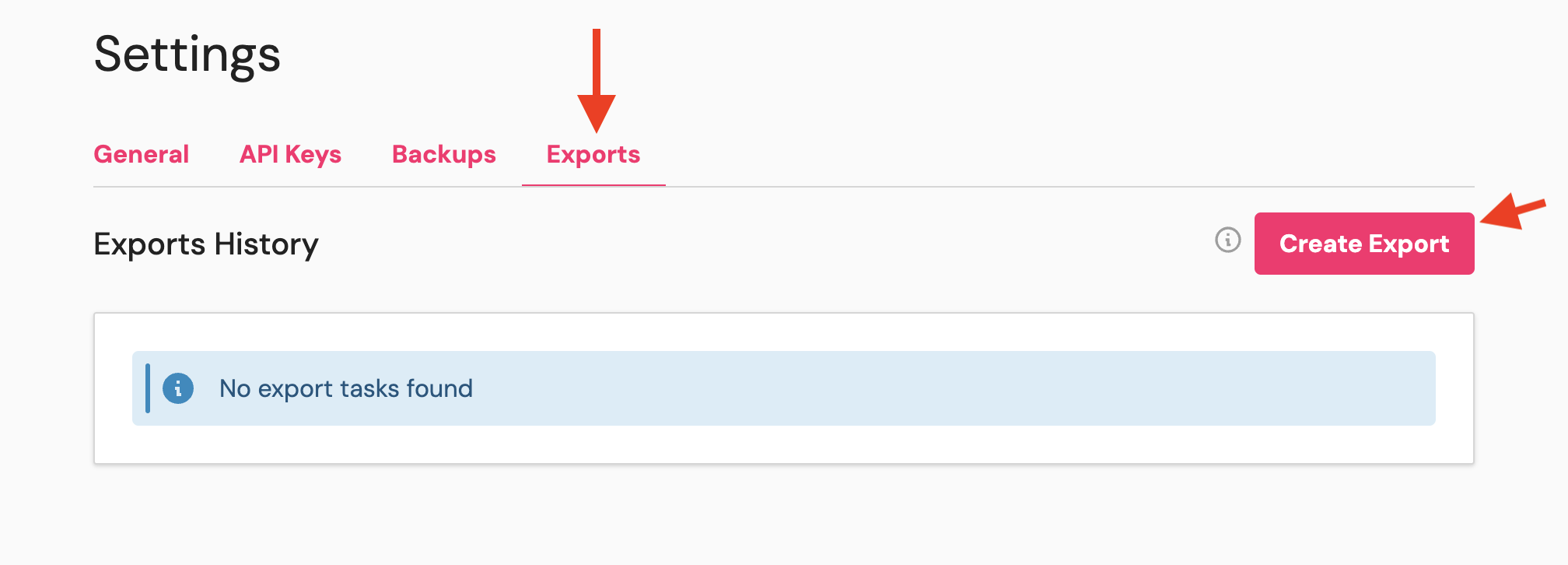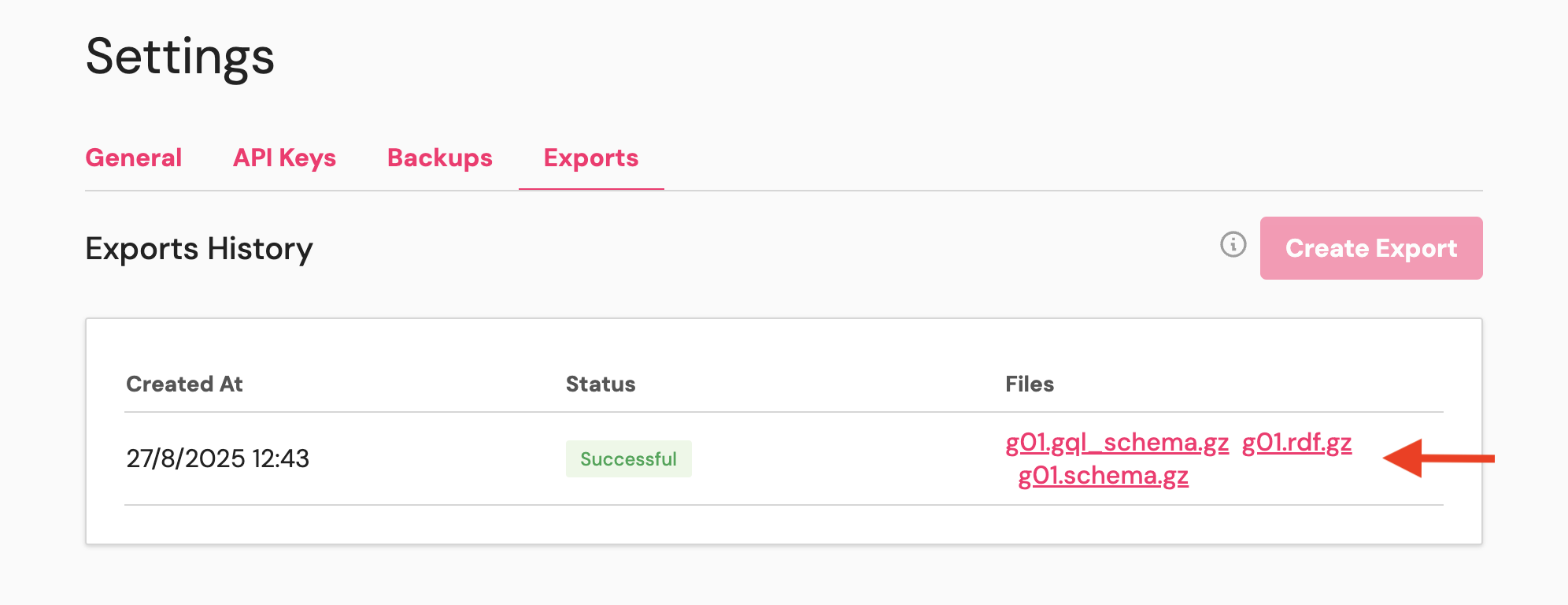Overview
This guide walks you through migrating your Dgraph database from managed cloud services to a self-hosted environment. It covers step-by-step instructions for deployment using various cloud providers and methods, supporting goals like cost savings, increased control, and compliance.This guide supplements the Dgraph self-managed documentation.
Be sure to refer to the self-managed documentation
for more information.
Deployment options
When migrating to self-hosted Dgraph, your deployment choice depends on several key factors: data size, team expertise, budget constraints, and control requirements. Here’s how these factors influence your deployment decision: Data Size Considerations:- Under 100GB Docker Compose or Linux are suitable options
- 100GB to 1TB Kubernetes or Linux can handle the load
- Over 1TB Kubernetes is required for proper scaling and management
- High Kubernetes Experience: Kubernetes deployment is recommended
- Limited Kubernetes Experience: Docker Compose or Linux are more approachable
- Cost Optimized: Linux provides the most economical option
- Balanced: Docker Compose offers a good middle ground
- Enterprise: Kubernetes provides enterprise-grade features
- Maximum Control: Linux gives you full control over the environment
- Managed Infrastructure: Kubernetes provides managed infrastructure capabilities
- Kubernetes: Best for large-scale deployments, enterprise environments, and teams with K8s expertise
- Docker Compose: Ideal for development, testing, and smaller production workloads
- Linux: Perfect for cost-conscious deployments and teams wanting maximum control
Prerequisites
Before starting your migration, ensure you have the necessary tools, access, and resources.Required tools
Command Line Tools
kubectl(v1.24+)helm(v3.8+)dgraphCLI toolcurlor similar HTTP client- Cloud provider CLI tools
Development Tools
- Docker (for local testing)
- Git (for configuration management)
- Text editor or IDE
- SSH client
Access requirements
- Source Systems
- Target Infrastructure
- Dgraph Cloud: Admin access to export data
- Hypermode Graph: Database access credentials
- Network: Ability to download large datasets
Data export from source systems
The first step in migration is safely exporting your data from your current managed service. This section covers export procedures for both Dgraph Cloud and Hypermode Graphs.Exporting from Dgraph Cloud
Dgraph Cloud provides several methods for exporting your data, including admin API endpoints and the web interface.Method 1: Using the Web Interface
1
Access Export Function
Log into your Dgraph Cloud dashboard and navigate to your cluster.

2
Navigate to Export
Click on the “Export” tab in your cluster management interface. 

3
Configure Export Settings
Select your export format and destination.
Dgraph Cloud supports JSON or RDF.\

Click “Start Export” and monitor the progress. Large datasets may take several
hours.
4
Download Exported Data
Once complete, download your exported data files.

Method 2: Using Admin API
Method 3: Bulk export for large datasets
For datasets larger than 10 GB, use the bulk export feature:Exporting from Hypermode Graphs
For larger datasets please contact Hypermode Support to facilitate your graph
export.
Using admin endpoint
For smaller datasets you can use the admin endpoint to export your graph.
For larger datasets please contact Hypermode Support to facilitate your graph
export.
Export validation and preparation
Data integrity checks
Prepare for transfer
1
Organize Export Files
2
Create Checksums
# Generate checksums for integrity verification cd migration_data find
Pre-migration planning
Proper planning is crucial for a successful migration. This section helps you assess your current environment and plan the migration strategy.1. Assess current environment
2. Infrastructure sizing
CPU Requirements
Alpha Nodes: 2-4 cores per 1M edges
Zero Nodes: 1-2 cores (coordination only)
Load Balancer: 2-4 cores
Monitoring: 1-2 cores
Memory Requirements
Alpha Nodes: 4-8 GB base + 1 GB per 10M edges
Zero Nodes: 2-4 GB (metadata storage)
Load Balancer: 2-4 GB
Monitoring: 4-8 GB
Storage Requirements
Data Volume: 3-5x compressed export size WAL Logs: 20-50 GB per node
Backup Space: 2x data volume Monitoring: 50-100 GB
Network Requirements
Internal: 1 Gbps minimum between nodes External: 100 Mbps minimum
for clients Bandwidth: Plan for 3x normal traffic during migration
Latency: <10 ms between data nodes
Data Migration and Import
1. Verify Cluster Status
2. Import Schema
- Kubernetes
- Docker Compose
- Linux
3. Import Data
Refer to the Dgraph bulk loader documentation for efficiently
handling larger datasets.
- Live Loader (Kubernetes)
- Live Loader (Docker Compose)
- Live Loader (Linux)
4. Restore ACL Configuration
- All Deployments
Post-Migration Verification
Data Integrity Checklist
- Count total nodes and compare with original - Verify specific data samples - Test query performance - Validate application connections
1. Data Integrity Check
2. Performance Testing
Monitoring and Maintenance
1. Setup Monitoring Stack
2. Backup Strategy
Set up automated daily backups to ensure data protection.
Troubleshooting
Pod Startup Failures
Pod Startup Failures
Storage Issues
Storage Issues
Network Connectivity
Network Connectivity
Test Internal DNS
Additional Resources
Dgraph Operational Runbooks
The following runbooks provide operational guidance for various scenarios you
may encounter during and after migration.
High-Availability Management
Enable or disable high-availability (HA) for Dgraph clusters, scale replicas, and manage cluster topology.
Zero Node Recovery
Freshly rebuild Zero nodes to avoid idx issues and restore cluster stability.
HA Cluster Rebuild
Rebuild high-availability clusters using existing p directories while
preserving data.
RAFT Group Management
Remove and re-add problematic Alpha nodes to RAFT groups for cluster health.
Cluster Unsharding
Convert sharded clusters back to non-sharded configuration safely.
Migration Validation Checklist
Post-Migration Validation
Use this checklist to ensure your migration was successful:Data Integrity
- Total node count matches source
- Random data samples verified
- Schema imported correctly
- Indexes functioning properly
- Query response times acceptable
- Throughput meets requirements
- Resource utilization within limits
- No memory leaks detected
- Monitoring and alerting active
- Backup procedures tested
- Scaling mechanisms verified
- Security policies enforced
- All clients connecting successfully
- Authentication working
- API endpoints responding
- Load balancing functional
This migration guide is a living document. Please contribute improvements,
report issues, or share your experiences to help the community. For additional
support, join the Dgraph community or consult the operational runbooks in the
Hypermode ops-runbooks repository.

